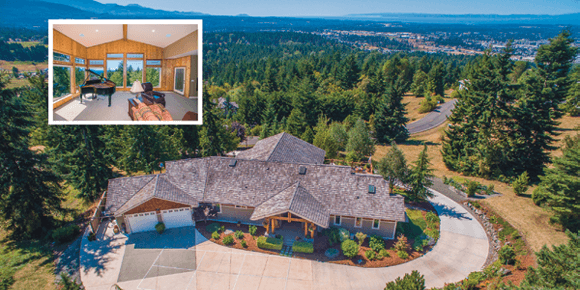Special Section:
Neighborhood Character
As a CRS, you need a strategy to stay ahead of the competition. In this special section, we take a closer look at four types of neighborhoods—gentrifying, ethnic, retirement and unfamiliar—and how CRSs can gain a better understanding of these markets.
Researching gentrifying, ethnic, retirement and unfamiliar neighborhoods.
 Gentrifying
Gentrifying
Steve Westmark, CRS, with Counselor Realty in Minnetonka, Minnesota, focuses on the west side of the Twin Cities. The suburban areas of Chanhassen, Chaska and Eden Prairie have grown in recent years due to expanded roadways that offer easier access to downtown and new corporate campuses right in these areas.
Westmark saw this upswing coming; hes active in the local chamber of commerce and stays up-to-date on all the local business and development news. Whenever you have an opportunity to hear whats going on in your area, on plans and trends in your community, go to that event, he says.
Likewise, MaryKay Shumway, CRS, spends a lot of time at planning commission meetings so she can best sell the new facets of the community to potential buyers. In fact, she identified Sister Bay, Wisconsin, as up-and-coming three years ago, when she was selling a farmhouse that was surrounded by roads that were going to be reconfigured by an upcoming Department of Transportation road construction project.
Lea Ellison, CRS, has educated herself about the neighborhoods around Five Points in Huntsville, Alabama, by simply becoming familiar with them. You learn by talking with other agents, going to open houses and tracking sales. Track whats going on by seeing it, not just by reading stats in the MLS.
 Ethnic
Ethnic
When clients want details, there are ways a REALTOR® can legally, ethically and truthfully help buyers determine a communitys defining characteristics. Anna May, CRS, broker and owner of Realty World Neighbors in Hayward, California, advises sharing resources so clients can collect information and draw their own conclusions.
- Point clients to the Census Bureau: May sends clients to the fact finder section of the U.S. Census Bureau website. The client types in a ZIP code and can review an areas specific demographics, including racial, ethnic and income breakdowns.
- Review community events: Often a community will host festivals or have relationships with other cities that imply cultural connections. For example, in Hayward, California, Mays geographic area of focus, the community shares sister relationships with different cities around the world. These cities suggest our ethnic connections, May says. Although in truth, Im only opening the clients eyes to what already exists.
- Offer a list of community houses of worship: This may suggest a neighborhoods ethnic characteristics.
- Direct clients to the local police department: Never disclose a neighborhoods crime statistics or voice an opinion about an areas safety.

Bell Hill, a retirement community in Sequim, Washington, features views of Happy Valley in the foreground and the Straits of Juan de Fuca to the northwest.
SENIOR SERVICE
Five steps for success when working with current and future retirees:
- Know and list their options. Providing clients with all the retirement housing options in the community will help them make a decision thats best for their needs and wants.
- Keep key features in mind. Retirees usually prefer homes with one-level living, a yard with no upkeep, opportunities to socialize and remain active, and locations close to their family.
- Help them downsize. This can be a difficult task for many seniors, so giving them tips about how to let go of items and prepare for a smaller living space will be extremely helpful and appreciated.
- Get the Seniors Real Estate Specialists designation. Seniors like to know what theyre paying forand it will help you attract clients and garner referrals.
- Anticipate that they may need more time with the process. Whether they need your assistance during showings or are taking their time choosing their forever home, patience is key.
 Retirement
Retirement
A good way to understand what senior buyers are looking for when it comes to retirement living is to investigate the different communities. There are many options, and its important to provide your clients with as much information as possible as to what lifestyle a particular community would allow/provide for. Visit the sites and look at the floor plans, suggests Lisa Weissgarber Harder, CRS. Then look at some of the pre-owned homes so youre prepared when someone says theyre interested in something where everybody is my age.
Retirees attracted to Sequim, Washington, for instance, are seeking a community that allows for an active lifestyle. We have thousands of miles of hiking trails in the Olympic National Park, which covers most of the peninsula, says Michael McAleer, CRS. What these retirees want is to live in a place with natural beauty, fresh air, a slower pace and a healthy lifestyle.
Most people who buy in these active communities are newly retired, Weissgarber Harder says. Theyre still able to play tennis, golf, bocce ball, swim and use the exercise room. Depending on the location, they get involved in a variety of classes and cultural trips. They move to these communities to be with people who are still young enough to have fun, she says.
No matter which type of community they live in, however, many Sequim retirees choose to grow old there, so businesses have opened to make that possible. For example, contractors are readily available to install key home features, such as walk-in tubs, grab bars and other accommodations, as aging bodies make it more difficult for senior residents to get around.
 Unfamiliar
Unfamiliar
As Pat Tasker, CRS, began researching sales in her new territory, she noticed a distinct pattern. A typical buyer in Menomonee Falls, Wisconsin, was either someone new to the area who had left the city and was looking for a starter home in a new school district, or people who were outgrowing their starter homes and condos and wanted bigger houses in the same area. Some buyers were transfers moving into the area.
However, once she began to see these personas, she could target her marketing accordingly. After just two years, she was the top agent in her new office. In her previous office, her best year was 95 closed transactions totaling $9.5 million. By making the move to the suburbs and getting to know the market, she doubled her average sale price. In 2015, she bested her former record, breaking $10 million with just 48 units.







